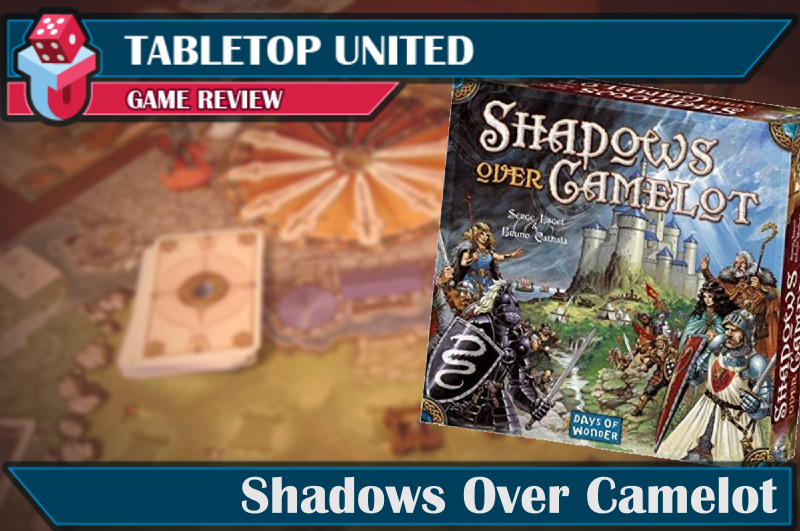Shadows Over Camelot
Designer: Bruno Cathala, Serge Laget
Artist: Cyrille Daujean, Julien Delval
Publisher: Days of Wonder
Year Published: 2005
No. of Players: 3-7
Ages: 10+
Playing Time: 60-80 min
Main mechanic / Theme: Co-Op, Hand Management, Traitor, Variable Player Powers / Medieval
“You know, I don’t think that we have a traitor this time.” Me (Traitor): “I think you’re right.”
Find more info on BoardGameGeek.com
Overview:
From the Publisher: SHADOWS OVER CAMELOT, THE UNIQUE COLLABORATIVE GAME FEATURING A MALEVOLENT TWIST!
As the incarnation of the Knights of the Round Table, you join forces against the game itself in an attempt to protect Camelot.
Your victory hinges on the successful completion of legendary Quests, such as the search for Excalibur, the Holy Grail, or Lancelot's Armor; the tournament against the Black Knight; and numerous wars against the Saxons and Picts.
But beware... all is not as it seems among these noble Knights. One of your number might yet turn out to be a traitor-in-waiting, biding his time while sowing havoc and destruction from the Shadows!
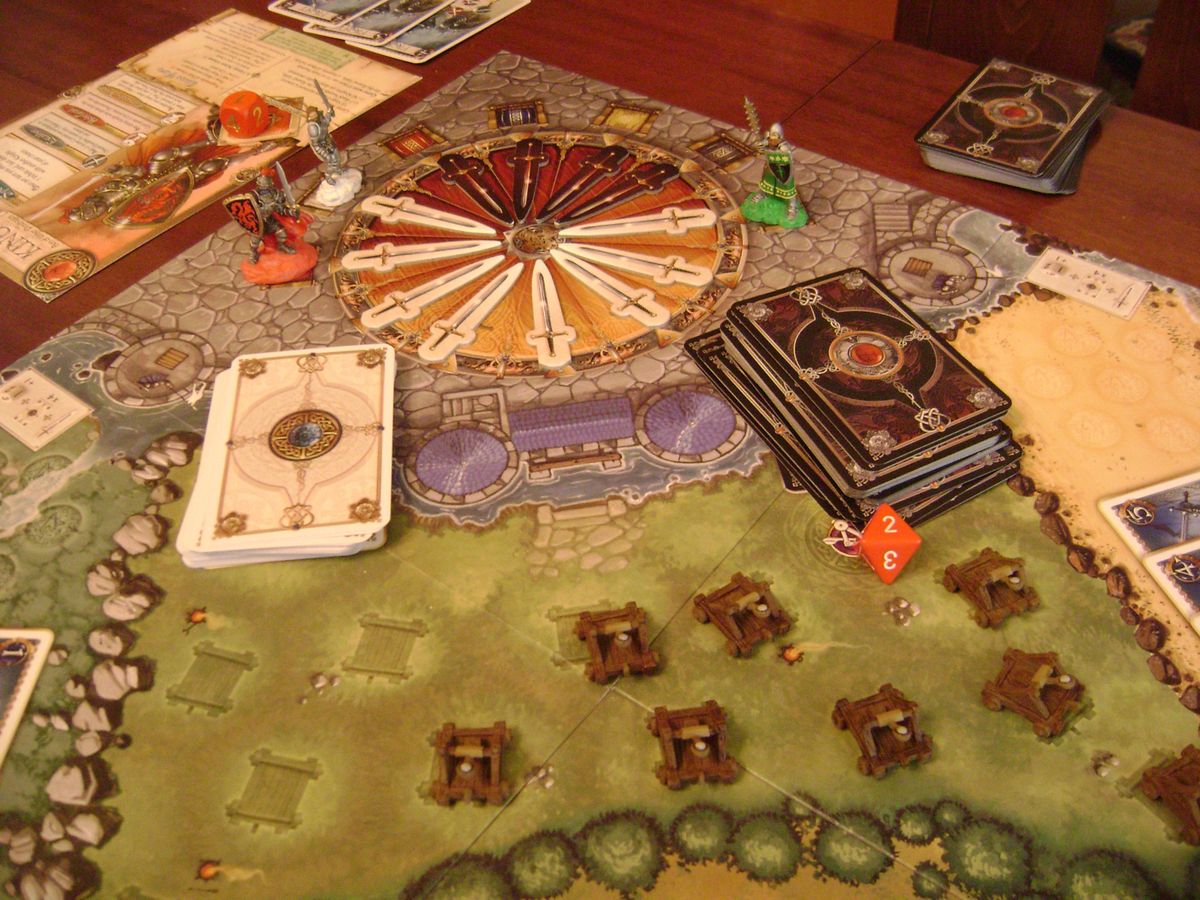
Gameplay and mechanics:
As one of the earlier hidden traitor type games on the modern board gaming scene, I consider Shadows Over Camelot to still be one of the best at implementing the mechanic into the game. The actual play of the game on each player’s turn is actually very simple. On your turn, EVERY turn, you will always do two things: choose one of the three Progression of Evil actions AND choose one of the five Heroic actions. In addition, any time that a card, black (evil) or white (heroic), is played or discarded from your hand, it is discarded face down. These two devices create the anonymity needed for the traitor to be able to succeed, as everyone must progress evil on every turn and nobody knows what cards are being discarded so it is not completely obvious that someone is subverting the efforts of the team. Shadows Over Camelot is a very active social game in that you are constantly feeling out the other players to discern exactly who they are working for or try to throw them off the scent of your own evil actions. It is even fun when there is no traitor at all because nobody knows that this is even the case
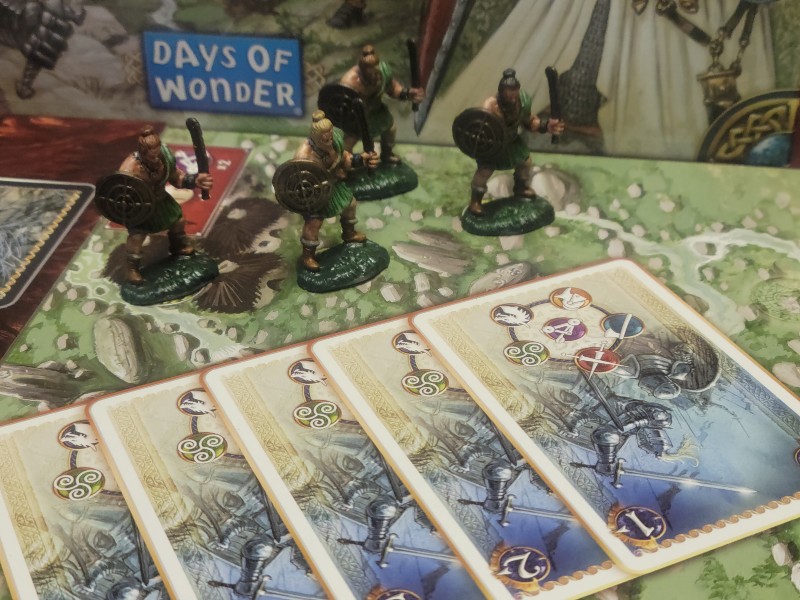
Theme, Artwork and Illustration, Graphic Design and Layout
The artwork on the boards and cards is beautiful and along with the detailed miniatures really takes you into the realm of King Arthur and his Round Table. The game board is bright and colorful and each quest area is very thematic to what you are doing there. I especially like the miniatures included for the Holy Grail, Excalibur and Lancelot’s armor. These aren’t player specific pieces or enemies to defeat but their inclusion really makes them so much more realistic and tangible than they would be if they were just cardboard chits. Slap a little paint on all of the minis and you get an even more immersive feel to the game. This game is oozing with theme and intrigue and everything about it says Camelot.
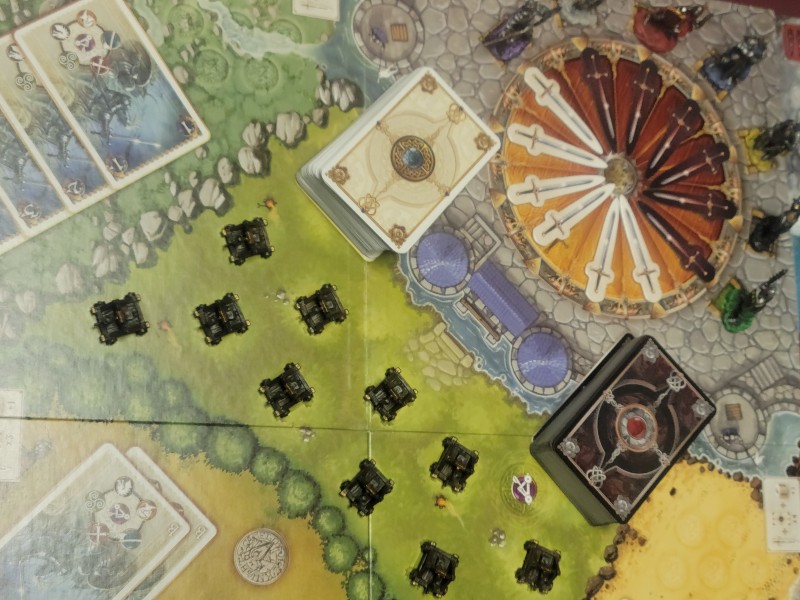
Inclusivity and Accessibility:
Tabletop United believes that diversity is a source of fun and happiness. Nurturing and celebrating our personal differences can lead to amazing gaming (and life) experiences. Therefore, TTU is putting renewed emphasis on inclusivity and accessibility by adding a section in each of our reviews written after April 2021. You’ll begin to see more reviews with this section as time goes on. The inclusivity and accessibility section will critique those issues and strengths of the subject in the review based upon the unique background of the reviewer. Each reviewer views the world through their own particular lens and has a wide and varied experience from which they will write and review.
To be honest, the lack of inclusivity and accessibility is maybe the only real downside to this otherwise wonderful game. Despite the cover art of the box depicting two females, who are at least modestly dressed, there is a real lake of any female characters in the game itself. No playable characters are female and there are only a scant few cards of the 168 cards in the game that even depict a female character. Of the white, good cards, in the game there is only one card for the Lady of the Lake that helps the players towards defeating the forces of evil. Of the black, bad cards, in the game there are seven cards (1 Guinevere, 1 Vivien, and 5 Morgan) that depict a woman and they all have negative effects on the players. On the board itself, there is a crowd gathered in the Tournament area but none of them are discernable as female and there is one miniature, Excalibur, in which we can see the arm of the Lady of the Lake extending from the water to offer the sword to its champion. Representation of BIPOC individuals in this game is even less. Only Sir Palamedes is representative of anyone not Caucasian in the game and in his portrait his face is mostly covered by his traditional garb. I understand that the subject matter and time period don't lend themselves easily to much diversity, but I do feel that something more courld have been added and a quick internet search easily debunks the myth of the whiteness of Camelot (fictional or not.)
Accessibility was also not really a consideration in the creation of this game. To be fair, most of the pieces are fairly large or made of thick enough cardboard that handling them should not be much of an issue for those with dexterity problems, but many of the cards do contain a fair amount of small text and a few fancy medieval letters here and there that could be difficult to read for those with visual impairments. In a game where secrecy is a big factor, this could pose a problem for players who cannot read the cards and don’t want to give away their hand by asking for help.
Not to make excuses or give a free pass, but 2005 was quite some time ago especially when considering the evolution of board games and I can’t help but feel that if this game were made to day that there would certainly be some effort to make the game more inclusive and accessible.
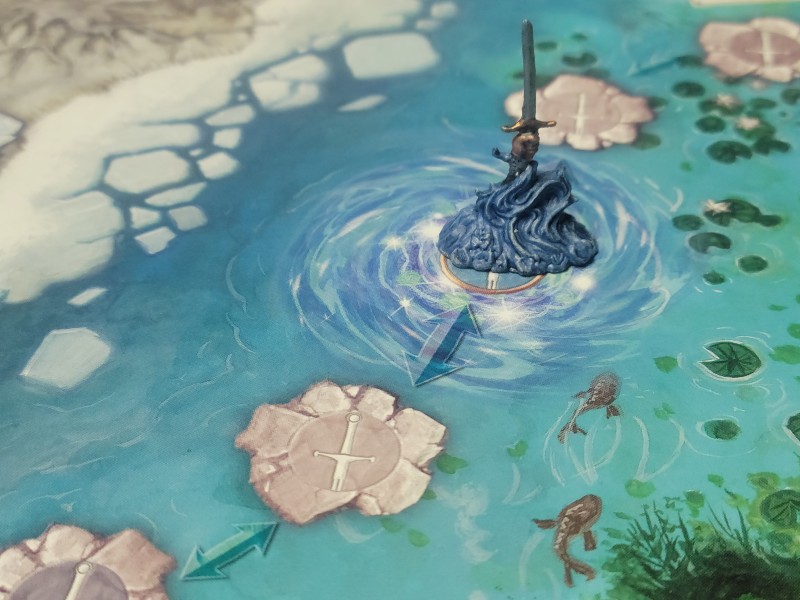
What worked:
I really like how easy this game is to bring in new people into the board gaming hobby. The rules are simple and turns are easy to plan and execute. The colorful boards and sprawling landscape are really eye-catching and everyone loves well-made miniatures. Now that I have everything for the game painted up it’s even more attention getting. For experienced players, this is still a game full of intrigue and challenge that doesn’t overstay it’s welcome and should be appealing to most. The one thing that can be off-putting for new players though is if they end up being the traitor in their first game and don’t feel comfortable in this role. This can sometimes turn players off from the outset because they feel that there is too much pressure involved. One thing to do is to assure players from the outset that even if there is no traitor in the game, this game will be difficult to win. When everyone is contributing to the advancement of evil, it can build up quickly and efforts need to be spread out across the different areas in order to have a chance for success. All that the traitor needs to do is help things out along the way, giving a nudge or two in the right direction to help themselves out.
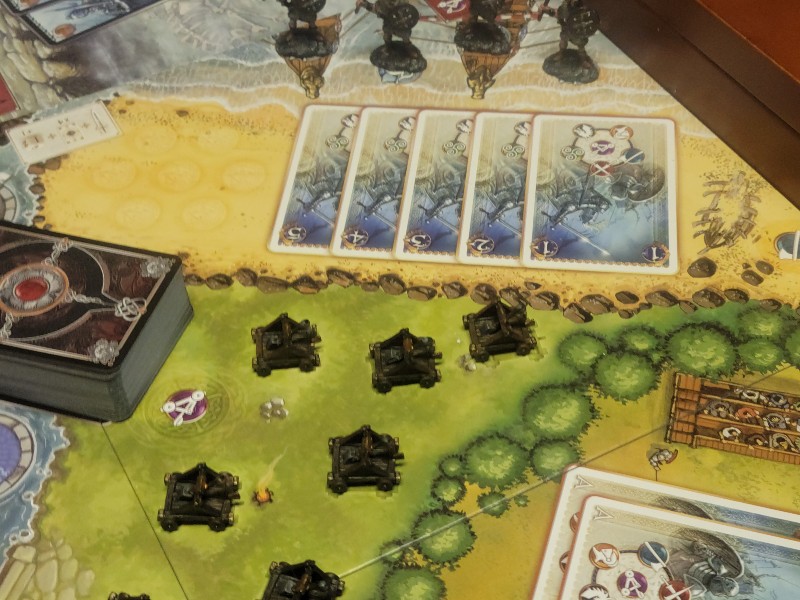
Final thoughts:
Despite the few weak points that I have illustrated above, I really enjoy Shadows Over Camelot and find it to be a great entry level game for both those unfamiliar with the hidden traitor mechanic and also those who simply have not been introduced to modern gaming in general. There are not many barriers to entry for most new players in this game but it is also a game that should have at least some appeal to more experienced players alike. The mechanisms are elegant, the challenge level is fairly high and the intrigue takes the tension up to 11 as you wonder who is sabotaging all of your carefully laid plans to victory. If you haven’t played Shadows Over Camelot, I would recommend getting a group together and giving it a go. This is a game that certainly shines at its higher player counts and turns go so quickly that there is very little lag time no matter how many you have playing.
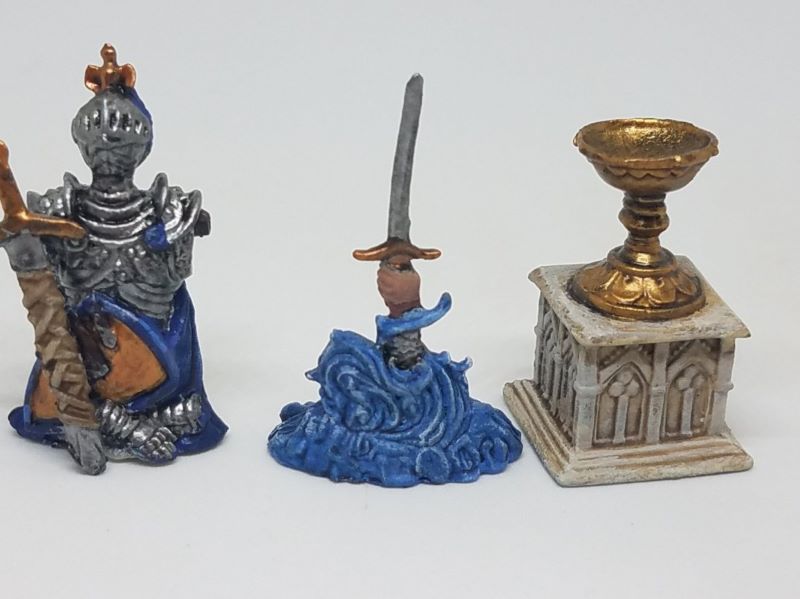
Stefan Yates

Stefan Yates is a professional in the Office of Diversity and Inclusion at Kansas State University. Finding ways to work gaming into work, he serves on the university’s Alternate Reality Game Committee and is a co-Faculty Advisor for the Board Game Club. He is also a PhD student whose field of research is Gamification in Student Programming. He enjoys playing (and mostly losing) almost any type of game and likes to work in multiple game sessions per week whenever possible. An avid solo gamer with an additional interest in tabletop miniatures games, the stay-at-home orders of the pandemic were not particularly concerning as there was always painting to do and terrain to build. Stefan is also a book and movie collector and a huge football fan (go CHIEFS!)


